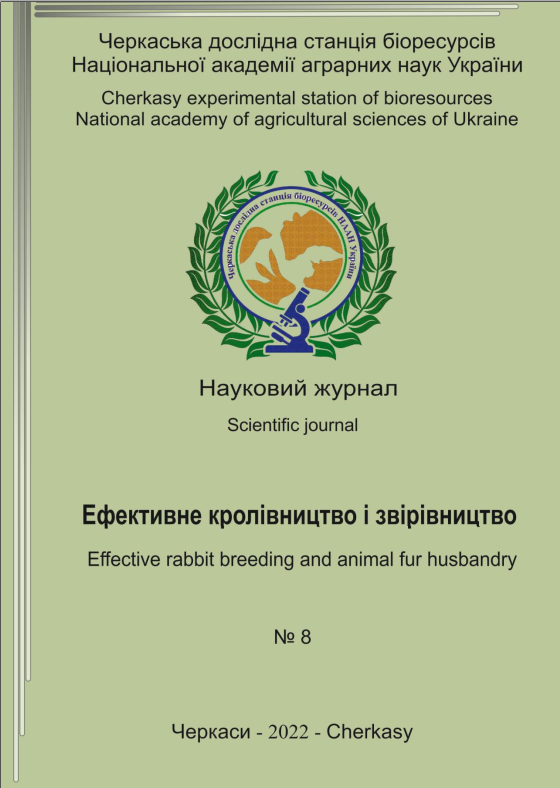EFFICIENCY OF APPLICATION OF EXISTING METHODS OF ARTIFICIAL INSEMINATION OF RABBITS
DOI:
https://doi.org/10.37617/2708-0617.2022.8.57-65Keywords:
rabbits, paratypic factors, sperm productivity, sperm, hormonal processingAbstract
With the aim of a deeper level of study of the reproductive performance of rabbits
under the condition of their artificial insemination, scientists are also engaged in
research on the individual development of the resulting offspring. Moreover, one of the
important periods of animal ontogenesis according to G.A. Schmidt is embryonic, which
is divided into three subperiods: actually early or embryonic (in rabbits - 1-12 days after
fertilization of the egg), pre-fertile (middle - 13-18 days) and fertile (late - 19-30 days).
Therefore, the work is aimed at improving the methods of increasing the
reproductive capacity of rabbits under different conditions of keeping. Clarification of the
effects of paratypic factors on the reproductive qualities of male and female rabbits under
caged confinement in a closed room as well as retro-technological confinement to
improve some elements of their reproduction. The paper highlights the results of a
complex study of indicators of the reproductive capacity of rabbits of different breeds
under different conditions of keeping and the influence of a number of paratypic factors.
It was established that there is a probable influence of the season of the year on the vast
majority of reproductive capacity indicators. According to the results of the study of five
litters of female rabbits of the California and Poltava silver breeds, it was established that
the use of the drugs "Foligon" and "Surfagon" ensures the effectiveness of artificial
insemination in the range of 86.5-88.5%.
When comparing the indicators of the reproductive capacity of female rabbits
treated with hormonal drugs, it was found that the average number of fetuses according
to the results of the ultrasound study varied between 8.7 and 8.9 goals. (p>0.05), animals
stimulated with the drug "Surfagon" predominated. Female rabbits of this group also had
an advantage in terms of multifertility - 7.9 points, which is 0.3 points. more in
comparison with animals treated with the drug "Foligon" (p>0.05) and by 1.5 goals.
more compared to the control (p<0.001). The average value of the multifertility index in
female rabbits of the Poltava silver breed was 6.1-7.5 goals. with a probable
predominance of stimulated female rabbits over the control (p<0.01...0.001), the
maximum values of the multifertility index were obtained by female rabbits administered
the drug "Foligon"


